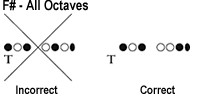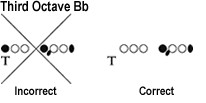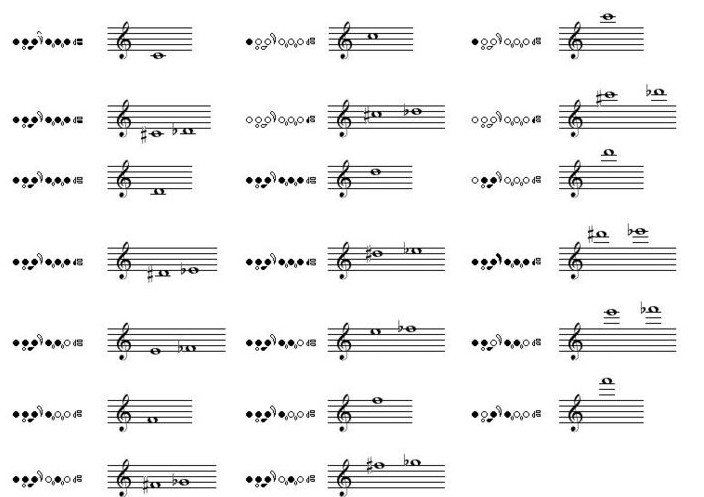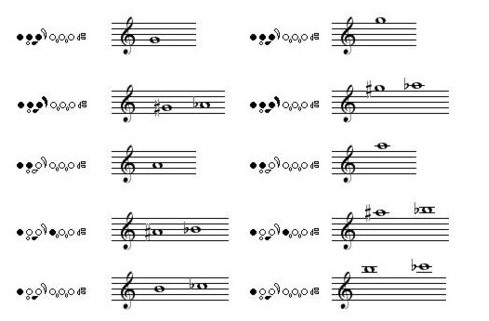
|
Assuming students are able to navigate the pitfalls of posture, the next subject to be broached is the use of correct fingerings. The most common mistakes include using incorrect fingerings for the first and second octave D and Eb. The index finger in the left hand must be down for these notes in the lowest register of the instrument, but lifted an octave higher.
Additionally, F# in all registers should be fingered using the ring finger of the right hand and not the middle finger. (Note that the middle finger can be used for F# in the highest register among advanced flutists to lower the pitch for better intonation.)
Another difficult note in terms of fingering is Bb/A#, in all registers. The complication stems from the fact that there are three useful ways to finger the note in the lower two registers. Most beginners first learn the “one + one†fingering, and although this is a useful fingering for beginners, it is probably the least commonly used by professionals. Obviously, the other Bb fingerings are very useful, so it is a good idea to teach these to students as soon as they are capable of learning them. The Bb thumb key fingering is especially useful in bands where students are usually playing in keys with flats.
|
 |
 |
Bb Using Thumb Key
This fingering eliminates the need to use any right hand fingers (except the pinky), so that an alternation between G and Bb, for example, becomes greatly simplified. It is important for students learning this new fingering to understand that they can leave their left thumb on the Bb thumb key on any note for which the thumb is down. The only exception to this rule is the third octave Gb/F#. The other possible Bb fingering uses the small lever key just to the left of the F key.
|
 |
Bb Using Lever Key
This fingering for Bb/A# is especially useful when moving to and from B natural (or Cb) such as in the keys of Gb or B major or in chromatic passages
|
 |
The third octave Bb has its own unique fingering.
This note tends to be flat, especially in comparison to the surrounding third octave notes, which are often sharp. This tendency can be partially corrected by lifting the left index finger when fingering the note. Unfortunately, some fingering charts indicate that the index finger should be down, but many professional flutists recommend the opposite.
|
 |
 |